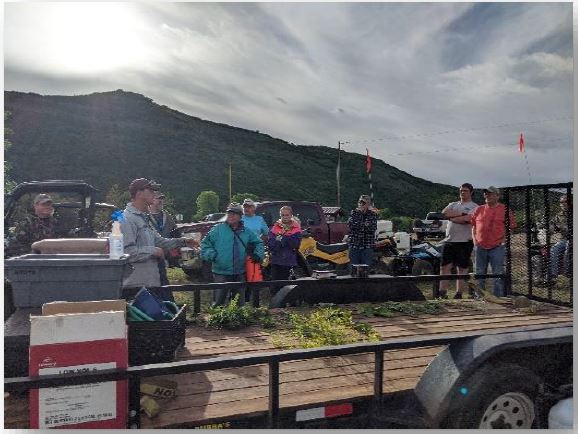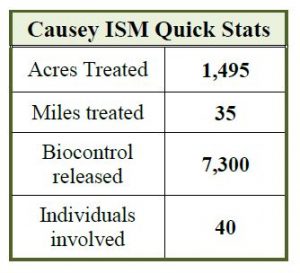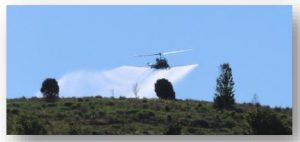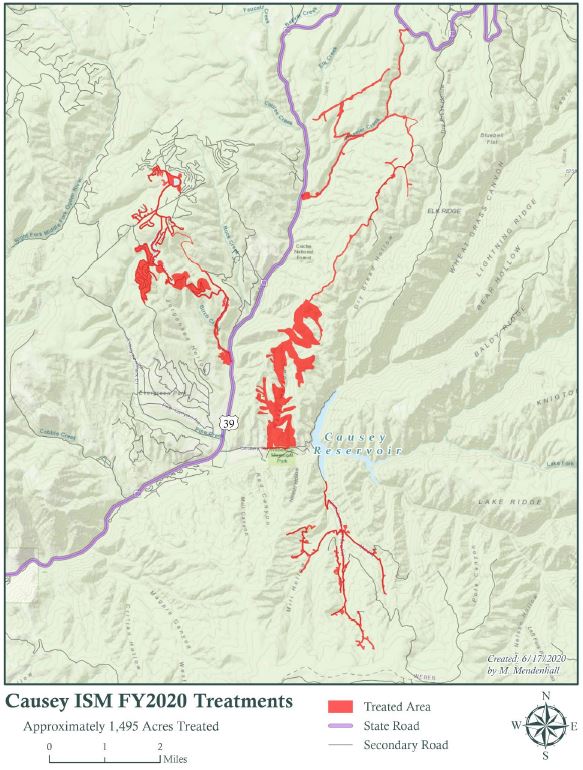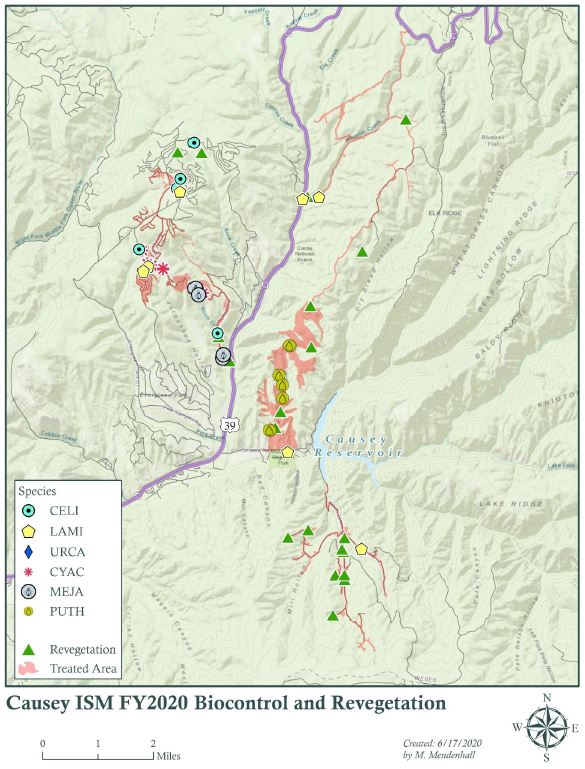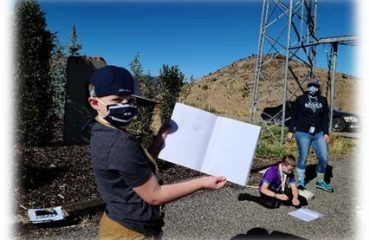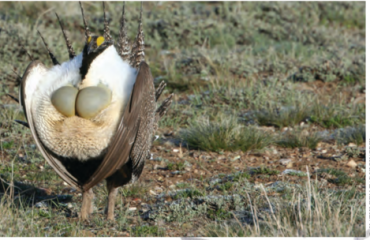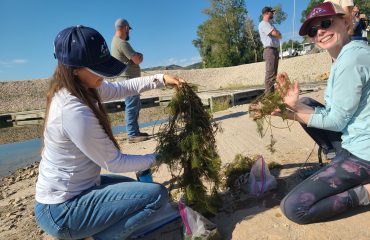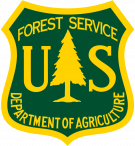Overview
In the summer season of 2019, the Invasive Species Mitigation grant from Utah Department of Agriculture and Food (UDAF) provided for the treatment of approximately 1,495 acres of knapweed, Canada thistle, musk thistle, and dyer’s woad infested forests and rangelands. The project spanned four large private ownerships as well as small amounts of USFS lands that total more than 16,000 acres. Approximately 35 miles of unimproved roads and trails across all ownerships were monitored and treated for weed infestations. Numerous new or undiscovered weed infestations were identified and treated during this project, which originally targeted only 195 acres of known weeds. (See Graphic A)
Methods
Herbicide Treatment: Personnel from the Utah Division of Forestry, Fire, and State Lands in cooperation with private landowners, local counties, Utah Conservation Crew, and USFS crew sprayed approximately 1,165 acres across the four properties from mid-May to early June in 2020.
Milestone was used on areas with spotted knapweed or Canada thistle, while dyer’s woad and musk thistle infestations were sprayed with primarily Escort and Weedmaster. Personnel employed ATVs, UTVs, backpack sprayers, and contract helicopters to apply herbicide.
Most of the treatments involved spot spraying with minimal boom spraying necessary. An additional 330 acres were sprayed using a helicopter in the spring of 2020. Private landowners provided significant contributions with multiple spray days and assistance with spraying efforts. (See Graphic B)
Biocontrol:
In May, 2020, approximately 10 releases of dyer’s woad rust (Puccinia thlaspeos) with two accompanying SIMP plots were monitored. Toadflax 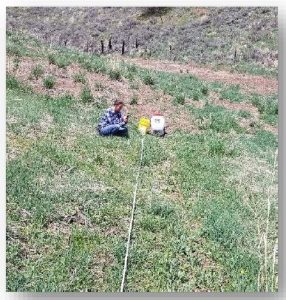 weevils (Mecinus janthinus) were collected and released in 5 locations, totaling more than 2,500 insects. In mid-July approximately 3,500 knapweed seed weevils (Larinus minutus) were released in 7 locations. In August, 8 release of knapweed root weevil (800 Cyphocleonus achates) and 5 releases of Canada thistle stem weevil (500 Ceutorhynchus litura) were released. All releases were done in partnership with the Utah Weed Supervisors’ biocontrol contractor. Release sites were often difficult to find due to treatment efforts removing forage for potential release sites.
weevils (Mecinus janthinus) were collected and released in 5 locations, totaling more than 2,500 insects. In mid-July approximately 3,500 knapweed seed weevils (Larinus minutus) were released in 7 locations. In August, 8 release of knapweed root weevil (800 Cyphocleonus achates) and 5 releases of Canada thistle stem weevil (500 Ceutorhynchus litura) were released. All releases were done in partnership with the Utah Weed Supervisors’ biocontrol contractor. Release sites were often difficult to find due to treatment efforts removing forage for potential release sites.
Reseeding:
Approximately 700 lbs of grass seed was broadcast using ATVs or hand seeders. Every known bare or recently disturbed site within the project area was seeded as well as any of the high density weed infestations with little to no remaining native vegetation.
Challenges and Successes
With more than 1,495 acres receiving some variation of treatment, many areas were only monitored or treated on a single instance rather than included in follow-up efforts. Overall, most areas were treated multiple times throughout the summer and well before plant maturity.
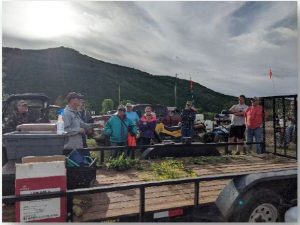 Approximately 30 private landowners and cooperators turned out for a spring spray day to learn about weed control and to implement treatments throughout Causey Estates. Another successful spray day was hosted by the home owners association in the fall to complete additional weed control.
Approximately 30 private landowners and cooperators turned out for a spring spray day to learn about weed control and to implement treatments throughout Causey Estates. Another successful spray day was hosted by the home owners association in the fall to complete additional weed control.
Overall, the project was quite successful and many areas were sprayed 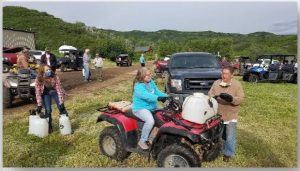 while target weeds were in the rosette stage. Herbicides were very effective and spot spraying in the fall was very minimal in areas properly treated in the spring.
while target weeds were in the rosette stage. Herbicides were very effective and spot spraying in the fall was very minimal in areas properly treated in the spring.
Although the knapweed population has been significantly controlled during this effort and greatly reduced, various populations of lower priority weeds such as dyer’s woad were able to move into more inaccessible areas that would require a massive backpack spraying effort to fully control.
Aging equipment with constant mechanical issues reduced efficiency and productivity on a number of days.

